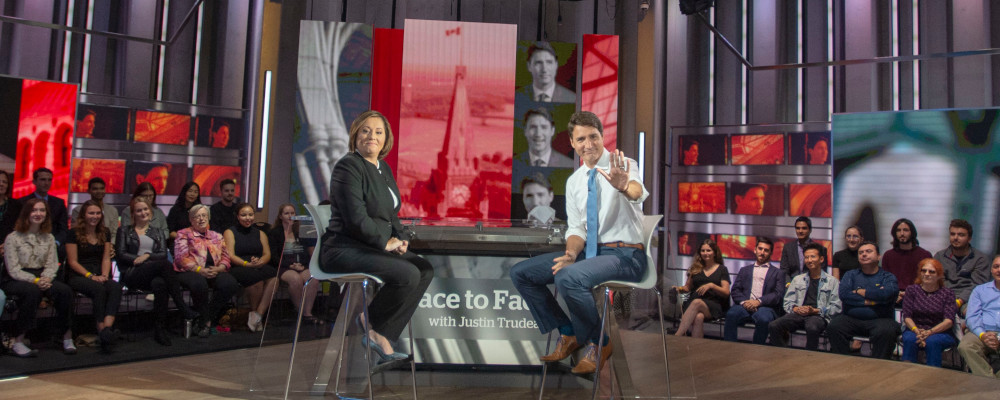This week one of Canada’s larger importing agencies, Profile Wine Group, celebrated it’s 30th birthday by holding a portfolio tasting for the first time since the pandemic shut everything down. I was invited to the wine-tasting event, held in a big ballroom on Toronto’s waterfront, which featured hundreds of wines from dozens of producers, many of whom had flown in from the four corners of the wine-making world.
Although I got there early in the day, it was packed, mostly with restaurateur clients of the wine agency. They were there to check out wines that they might buy for their restaurants, especially high-end ones like Cabernet Sauvignon from Napa Valley or Barolo from Piedmont in Italy.
Like any trade show, the portfolio tasting was also a social event. For journalists too—the tasting was a chance to catch up with colleagues and some of the producers at the show. There was no way I was going to taste all, or even most, of the wines. It was too busy and too social. It’s hard to taste while you’re talking, let alone take notes.
The strategy was to take advantage of some of the visiting producers and try and get a feel for what’s happening in the wine world. But first, there would be bubbles. Champagne Mailliard is an old house, but a new one to Profile. The Cuvée Gregoire, a non-vintage, was crisp and finely moussed. It was hard to spit out. So were the grower Champagne’s Cuvée Alexia Rosé NV and the blanc de blanc Cuvée Prestige 2016.
Next, it was time to see some familiar and friendly faces like Dr. Lily Fazio, who runs her family’s eponymously named winery in the west of Sicily. The star of her table, for me, was the 2022 Fazio Anima Solis Bianco, an aromatic 50/50 blend of indigenous Sicilian white grapes, Zibbibo, and Cataractto. Underneath the white flower bouquet was a solid fruit base of stone fruit and citrus. Again, hard to spit out.
Then, it was time to travel around the world and see Justin Taylor from Wakefield in South Australia’s Clare Valley. Justin was pouring some of his family’s fancier Cabernet Sauvignons, going back into vintages seven years old. The real star of his table though might have been the 2021 Jaraman Chardonnay. This blend of fruit from the Adelaide Hills and Clare Valley retails for $24.95 in Ontario and tastes like a fancy bottle that might cost twice as much. It is, Taylor told me, his house wine that’s always in the fridge.
Apart from enjoying the wine, Taylor had some serious things to say when I asked him how his year had been. Inflation is weighing heavily on production, and costs have gone up steeply just as consumers are getting pinched by the same market forces. His challenge is to find ways to keep his pricing competitive and quality high.
Back to the Old World with a tasting of Château Haute Selve Blanc 2022 ($38.99) from Graves in Bordeaux. From what I read, Bordeaux, at the higher end, is having a bit of a comeback after being somewhat overshadowed by Burgundy. This classic blend of Semillon (50 percent) and Sauvignon Blanc was, well, classic. The delicate aromatics from the Sauvignon settle into a mellow fruit bed from the Semillon. I resolved to keep my eye out for white Bordeaux. Stay tuned.
I worked with my friend and Good Food Revolution co-founder, Jamie Drummond for a dozen years. On the floor, Jamie was one of the country’s top sommeliers, a rank he has retained since focusing on media. I am sure I learned more about wine from hanging around Jamie than anything else.
An iron-clad Jamie Drummond rule is that if Peter Franus is in the room, proceed to his table. This rule is doubled in intensity if Peter’s wife and winery partner Deanne is also there. It’s good when there are two of them because their tasting table will inevitably be crowded and one might pour while the other explains what’s in the glass.
What’s in the glass will be an argument that California, or even the valleys north of San Francisco, isn’t actually a wine region. Rather it’s a collection of them, and ones capable of bringing forward wines that defy cliché. A case in point might be the 2019 Peter Franus Brandlin Vineyard Zinfandel made from old vines in Napa Valley. Wonderfully perfumed and playful, it’s nothing like the stereotypical fruit bomb that defined big-label California Zin in the 1990s.

After the better part of two hours, it was time to wrap things up for me. The tasting was getting more crowded and it was getting harder to reach the spit buckets. It was time to see Robin Shay, a Californian who has built a career as a marketer and educator in the Italian wine industry, and who was pouring the very fine wines of Poggio San Polo from Montalcino in Tuscany.
The San Polo table was as crowded as any other, and when I got a spot next to it, it was the end where the top wines, from the single vineyard Brunello di Montalcino Podernovi, were being poured. I arrived just as Shay was pouring the 2017 Podernovi and I extended a glass right away so that instead of the usual routine of tasting up, I would start from the top and work down. The 2017 Podernovi, and the 2016 that followed it, were sublime, and finishing after the brooding dark cherry was a herbal note of juniper.
From the Podernovi, which retails for over $200 a bottle, I tasted the estate-grown 2017 San Polo Brunello, then the 2020 Rosso di Montalcino, and finally the 2020 Rubio Toscana IGT. The prices of the wines would roughly decline by half per bottle as I tasted through. No doubt worth it in every case, but I have a special place in my heart for the San Polo Rubio, which is still (just) under $25.
Like the Taylor family in Australia, the Allegrini family in Italy, who own San Polo, make it a point of pride that they produce both wines that cost hundreds of dollars and ones that cost under $25. The Rubio might lack the sublime complexity of the San Polo Brunello, but it’s a lot of fun with a lot of juicy red fruit deliciousness. I left the show happy and optimistic about more good wine to come, even ones I might be able to afford on a Friday night.
Recommended for You

Malcolm Jolley: Cool Chardonnays for warm days

Malcolm Jolley: The LCBO strike was a spectacular misstep

Malcolm Jolley: Doug Ford is right. The LCBO has long outlived its purpose

Malcolm Jolley: What is rosé anyway?











